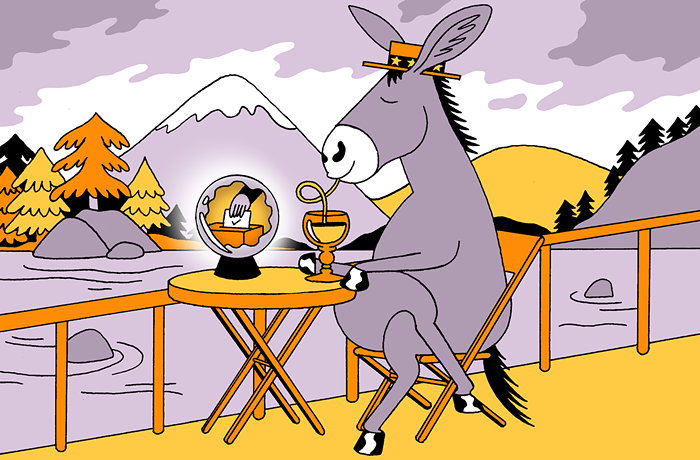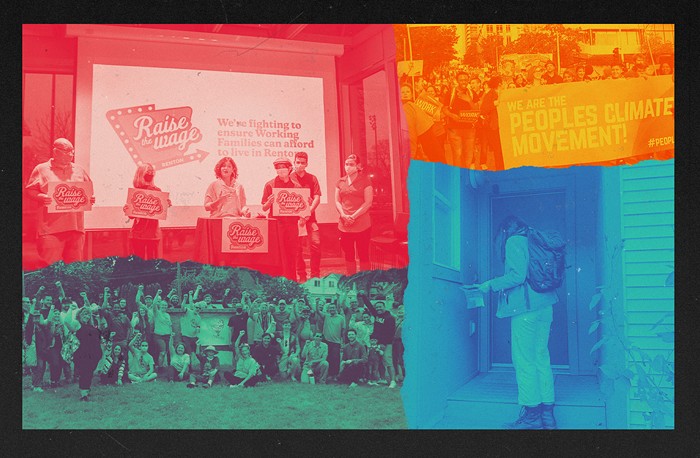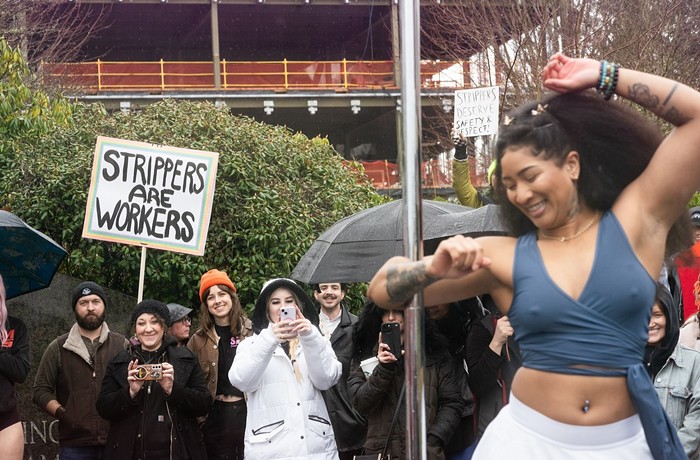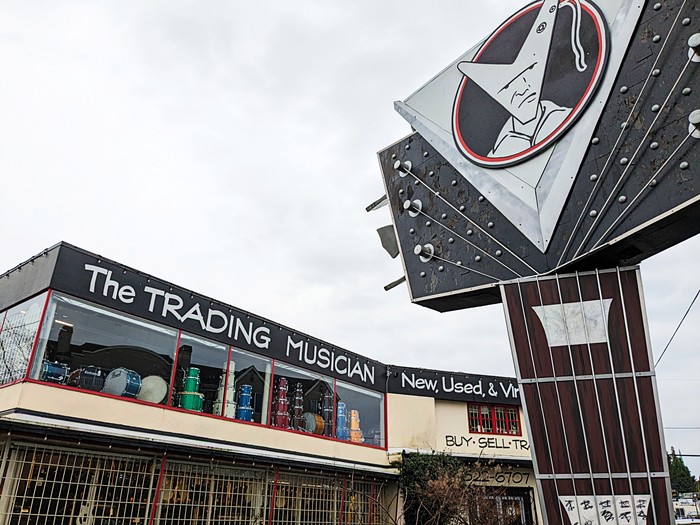"This is fucking cool, man, this is as cool as it gets," a local activist is telling me on the phone. "It's the coolest damn thing I've ever seen in 30 years of activism... Planning for this should start now." I'm talking to self-described "media freak" Jim Goettler about low-power FM radio. Due to recent federal rule changes, Seattle could have up to eight new mini radio stations in the next few years, each broadcasting for miles on just 100 watts—the power of a lightbulb. And a cadre of media activists in Seattle is coming together to make sure this one-time-only opportunity doesn't go to waste.
For example, Hollow Earth Radio, which runs their online-only radio station out of a Central District storefront with volunteer DJs, would love to get on the old-fashioned radio dial, and they see low-power FM as a perfect opportunity. "I'm excited about all the collaborations in the future and the different kinds of media that will come out of it," Hollow Earth cofounder Garrett Kelly tells me via e-mail. Same with 206 Zulu, which runs the locally produced hiphop show Zulu Radio on KBCS once a week but sees promise in helping to run an independent station. Kitty Wu from 206 Zulu says, "We've been talking about bringing a radio station here for a long time."
This all results from the Local Community Radio Act, introduced by US senator Maria Cantwell and signed into law in 2011, which requires the Federal Communications Commission to allow more low-power radio operators. In October, the FCC will open a filing window for people to apply for low-power FM (LPFM) licenses, which permit a station to broadcast at 100 watts for noncommercial purposes. For the first time—and likely the last, given how full the FM dial already is—these stations will be available in urban areas.
In Seattle, there's space for about eight new stations, each broadcasting over a radius of about three miles in our hilly, skyscraper-filled city terrain. But they could have even farther reach: LPFM licensees will be allowed to own relay stations that rebroadcast their content, meaning they could blanket much of the city. Media advocates say that if you want to apply in October, you should start planning now.
But why would you want to get an old- fashioned radio station, when you could just run one on the internet or record podcasts?
I ask Sabrina Roach, who's worked in public-interest media for more than a decade. "Radio is so much less expensive to produce" than other kinds of mainstream media, like TV, she points out, and it reaches a lot of people. This is an opportunity "for more people to own actual licenses." That is, Hollow Earth Radio, which started in an attic and has shows like Konspiracy Korner and OlympiYEAH!, would be right there on the dial next to NPR and Clear Channel's Top 40 regurgitation.
And, on the consumer end, "a radio from Radio Shack is a lot less expensive than a MacBook," says Roach. For all the ubiquity of the internet, there are large swaths of the population, particularly low-income people, who don't have easy access to broadband internet to stream audio.
From a media-justice perspective, that's a huge deal. It means more diverse producers of content broadcasting to a more diverse audience. "Radio reaches people in their cars, while they're doing dishes, while they're doing chores," Roach says. It's an old medium, but it works incredibly well.
Since LPFM has so far been only in small towns and rural areas, it remains to be seen what it could do in the city. However, one station could offer a glimpse into Seattle's future: KYRS in Spokane, a decade-old community station, started out as an LPFM station with an old tower they found in an alfalfa field and a swarm of volunteers. In 2011, they upgraded to full power.
Station manager Lupito Flores says they broadcast "everything under the sun, but we try not to duplicate what's already on Spokane radio." That means little to no religious or country music. Instead, they have locally produced radio shows in multiple languages, shows aimed at African American, Native American, and Iranian American communities, a show produced and hosted by elementary school kids, a poetry show, and music from punk to hiphop to experimental.
There's a lot of money and a lot of support for LPFM in Seattle, too. Roach currently works for Brown Paper Tickets, which, as part of their community outreach program, is pushing to support LPFM by helping potential applicants learn the rules and find funding. When Roach looked into grants and matching funds in Seattle and King County that could be used to start LPFM stations, she identified an astonishing $9 million from places like 4Culture and Seattle's Office of Arts & Cultural Affairs. But some of the deadlines for these funds are as early as March.
As part of her outreach, Roach is hosting a series of workshops and information sessions through winter and spring, helping potential applicants pull together the necessary resources—lawyers, engineers, business plans, fundraising plans. (Check out her work at community.brownpapertickets.com/Doers/radio.html.)
The potential feels almost limitless—just think of eight little KEXPs. In the course of reporting this story, people kept reminding me that KEXP started as a 10-watt station that couldn't even broadcast past the UW campus, and now, as Roach points out, "they have global reach, because of the strength of their programming." ![]()


















